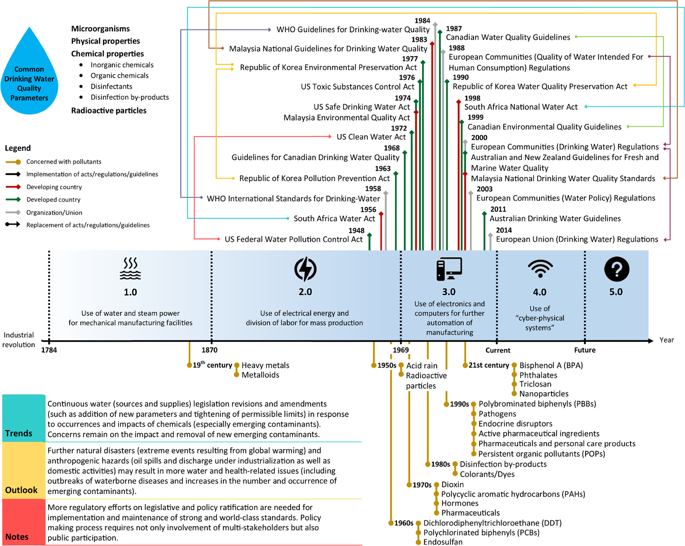npj Clean Water ( IF 10.4 ) Pub Date : 2019-02-06 , DOI: 10.1038/s41545-018-0029-3 Sze Yee Wee , Ahmad Zaharin Aris

|
Access to safe water is a crucial factor in determining environmental sustainability, public health, and economic prosperity. Endocrine disrupting compounds (EDCs) are an environmental contaminant of growing concern, which undermine the safety of drinking water. The potential health issues of EDCs are not fully understood yet due to there being relatively scarce research on their exposure and associated risks via drinking water consumption. Because of ineffective drinking water supply systems and unknown risk perceptions of EDCs in drinking water, the role of perceived risks in ensuring access to safe drinking water remains unknown, contributing to the occurrence of such potential risks in the global water system. Integrating preventive measures with a multibarrier approach to safe drinking water is highly challenging because of the relatively low public awareness and political responsibility, as well as the nature and characteristics of EDCs themselves. In addition to reviewing the occurrence and public-perceived risks of EDCs in drinking water, this article focuses on building bases of knowledge and awareness for a better understanding of drinking water quality issues relative to the hazards surrounding EDCs from the perspectives of human exposure and health risk. A conceptual model illustrates the factors that potentially influence risk perception on drinking water quality in regard to not only EDCs but also other issues. Ensuring safe access to drinking water requires interventions that incorporate risk communication and governance, providing insights into political, economic, social, and environmental changes.
中文翻译:

饮用水中内分泌干扰物的发生和公众认知的风险
获得安全水是决定环境可持续性,公共卫生和经济繁荣的关键因素。内分泌干扰化合物(EDC)是一种日益受到关注的环境污染物,它破坏了饮用水的安全性。由于对EDC的暴露及其与通过饮水引起的相关风险的研究相对较少,因此尚未完全了解EDC的潜在健康问题。由于无效的饮用水供应系统和对饮用水中EDC的未知风险感知,感知风险在确保获得安全饮用水中的作用仍然未知,导致全球水系统中此类潜在风险的发生。由于公众意识和政治责任相对较低,以及EDC本身的性质和特征,将预防措施与多壁垒方法相结合来确保饮用水的安全具有很高的挑战性。除了审查饮用水中EDC的发生和公众认为的风险外,本文还着重于建立知识和意识基础,以便从人类接触和健康的角度更好地了解与EDC周围的危害有关的饮用水水质问题风险。一个概念模型说明了不仅影响EDC,而且还影响其他因素对饮用水质量风险认知的潜在影响因素。要确保饮用水的安全获取,就需要采取干预措施,将风险沟通与治理相结合,











































 京公网安备 11010802027423号
京公网安备 11010802027423号